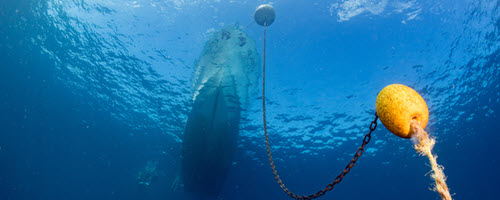|
|
|
|
|
|
|
|
|
|
|
|
Microsoft Is Supercharging the Carbon-Removals Market. Amazon Thinks We Should Take It Slow.
|
|
|
|
|
|
|
|
Today: One tech giant has been on a buying spree this year, while another believes a more measured approach is better for fighting climate change; the solution to America's aluminum shortage is sitting in your garage; the engineering marvel that China hopes will help wean it off foreign energy.
|
|
|
|
|
|

|
|
Aerial view of a former cattle ranch being reforested by Mombak in the Amazon region of Brazil. Photo: Pablo Porciuncula/Agence France-Presse/Getty Images
|
|
|
|
|
|
Welcome back: When it comes to buying carbon removals, the market has an undisputed heavyweight champion: Microsoft. But one of its main rivals thinks there is a better way to do it—by slowing down.
For Amazon carbon-credit czar Jamey Mulligan, building a marketplace where many buyers can buy carbon-removal credits is more important than having one that is accessible to only a handful of deep-pocketed buyers. He likened the task to running a marathon with your family, saying it is no use finishing on your own if your teammates are still on mile one, writes WSJ Pro Sustainable Business's Yusuf Khan.
Microsoft is often the anchor buyer in projects, sometimes purchasing up to half of a developer’s total credits. The tech company says that buying in volume encourages others to snap up the rest of the credits knowing the project has been backed and verified by Microsoft.
Amazon is more narrowly focused on restoring degraded land, reducing tropical forest loss and a handful of technologies such as direct air capture, enhanced rock weathering and some ocean carbon removal projects.
|
|
|
|
|
Content from our sponsor: Deloitte
|

|
|
Creating Stability For Workers So Organizations Can Move Fast
|
|
As organizations adopt AI and agile work models, they can build new anchors for workers, like using technology to create value for the business and workers, that provide stability and enable agility. Read More
|
|
|
|
|
|
|
|
|
A U.S. Aluminum Shortage? No, It’s Just Sitting in Your Garbage.
|
|
|
|

|
|
Duncan Pitchford leads Norsk Hydro’s U.S. upstream aluminum business. Photo: Nic Antaya for WSJ
|
|
|
|
|
|
The way around President Trump’s 50% tariff on imported aluminum might be sitting in your garbage. But Americans will have to do a lot more recycling for the U.S. to break its reliance on imported aluminum, the WSJ's Ryan Dezember writes.
U.S. primary aluminum production has dwindled over the past 25 years. Building a new smelter to make it from refined bauxite would take several years and billions of dollars, never mind continuing electricity consumption that can rival that of a major U.S. city.
Aluminum-recycling plants can be built faster and cheaper—roughly two years and $150 million in the case of a Norsk Hydro plant in Cassopolis, Mich. And since recycling facilities melt aluminum rather than cause a chemical reaction to create it, they consume about 5% of the energy needed for primary production.
|
|
|
|
|
|
The Engineering Marvel China Hopes Will Wean It Off Foreign Energy
|
|
|
|

|
|
China’s Yarlung Tsangpo River is currently a relatively untapped source of hydropower. Photo: Tian Jinwen/Xinhua/Zuma Press
|
|
|
|
|
|
China has begun the construction of a giant $167 billion hydropower project at the earthquake-prone edge of the Tibetan plateau, a spectacular engineering feat central to Beijing’s mission to become self-sufficient in critical areas such as energy, the WSJ's Austin Ramzy writes.
If its planners succeed, the project could generate triple the output of the world’s largest hydroelectric facility, China’s Three Gorges Dam, which is big enough to power around 40 million Chinese homes.
But the project on the Yarlung Tsangpo River has stirred accusations that it will give Beijing the power to strangle resources beyond its borders, where the river flows into northeastern India and then south through Bangladesh.
It has also raised fears of environmental damage and potential disaster in the mountainous, seismically active region. The location is one of vast biodiversity, featuring rare primates and a wider range of big cats, from snow leopards to Bengal tigers, than anywhere else in the world.
|
|
|
|
|
|
|
|
|
|
|
|
|
|
|
|
|
|
-
Vestas Wind Systems confirms guidance despite drop in orders. (WSJ)
-
J.P. Morgan backs $210m financing for chestnut carbon’s large-scale afforestation projects. (ESG News)
-
General Electric and United Nuclear agree to $63 million uranium mine waste cleanup. (WSJ)
-
Equatic raises $11.6 million to remove carbon, produce green hydrogen from seawater. (ESG Today)
-
The rise of green Wall Street. (Time)
-
IEA lifts global oil supply forecast, signaling bigger surplus ahead. (WSJ)
-
It’s time for NGOs to rethink their sustainability strategies. (Forbes)
-
'Cooked alive': Europe's wildfires hit tourism spots and forests. (Reuters)
-
China to hit Canadian canola with near 76% tariff as trade row escalates. (WSJ)
-
Risks of climate crisis to Australia’s economy and environment are "intense and scary," unreleased government report says. (Guardian)
|
|
|
|
|
|
|
|
|
|
|
|
|
|
|
|